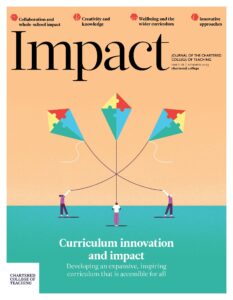Using Teach Like a Champion to improve EAL history for French students
Written by: Sara Beddoes

8 min read
SARA BEDDOES, HISTORY TEACHER/EAL COORDINATOR, BRITISH SECTION, LYCÉE COLLÈGE STE ANNE, FRANCE
This study examines the teaching of English as an additional language (EAL) to French students (Year 9) through the subject of history. The context is different from UK schools in that acquisition of English is not crucial for integration and future success. While all the students can be classified as EAL students, there is a disparity of current attainment levels in oral and written comprehension and production, and the classes are therefore very much mixed attainment. Several pedagogic strategies found in Teach Like a Champion (TLAC) (Lemov et al., 2016) have been employed within this mixed-attainment EAL context and found to be advantageous for student progression and confidence. As such, TLAC could be used in British classrooms containing both EAL and non-EAL students alike, and the advantages are twofold: by limiting the need to produce separate resources, it reduces teachers’ prepa
Join us or sign in now to view the rest of this page
You're viewing this site as a guest, which only allows you to view a limited amount of content.
To view this page and get access to all our resources, join the Chartered College of Teaching (it's free for trainee teachers and half price for ECTs) or log in if you're already a member.
- Cenoz J, Leonet O and Gorter D (2022) Developing cognate awareness through pedagogical translanguaging. International Journal of Bilingual Education and Bilingualism 25(8): 2759–2773.
- Chalmers H (2022) Mother tongues, to use or not to use, is that in question? In: Chalmers H (ed) English as an Additional Language. Woodbridge: John Catt, pp. 167–184.
- Chalmers H and Crisfield E (2019) Drawing on linguistic and cultural capital to create positive learning cultures for EAL learners. Impact 5: 18–19.
- Crisfield E (2022) Principles for planning an EAL-aware curriculum. In: Chalmers H (ed) English as an Additional Language. Woodbridge: John Catt, pp. 51–65.
- Lemov D, Hernandez J and Kim J (2016) Teach Like a Champion Field Guide 2.0. San Francisco: Jossey Bass.
- Luchini P (2015) simultaneous reading and listening is less effective than reading alone: A study based on cognitive load theory. In: Piechurska-Kuciel E and Szyszka M (eds) The Ecosystem of the Foreign Language Learner: Second Language Learning and Teaching. Switzerland: Springer, pp. 71–80.
- Mundelsee L and Jurkowski S (2021) Think and pair before share: Effects of collaboration on students’ in-class participation. Learning and Individual Differences 88: 1–11.
- Peal R (2017) KS3 History Modern Britain 1760–1900. London: Collins.
- Quigley A (2018 ) Closing the Vocabulary Gap. Oxon: Routledge.
- Quigley A (2020) Closing the Reading Gap. Oxon: Routledge.
0
0
votes
Please Rate this content
Subscribe
Please login to comment
0 Comments
Oldest
Newest
Most Voted
Inline Feedbacks
View all comments










